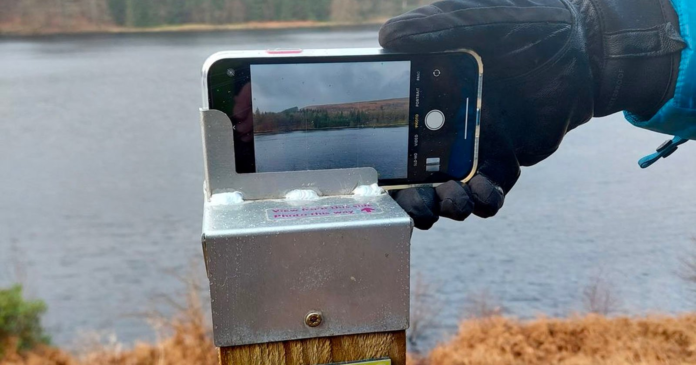Moors for the Future is a peat bog conservation organization in the United Kingdom. To monitor restoration efforts, the organization has installed photography posts that let visitors submit photos so that changes can be monitored via crowdsourcing.
The organization, founded in 2003, has been working on large-scale bog restoration across the South Pennine moors. To date, Moors for the Future has transformed 35 square kilometers of degraded peat, which it calls the most degraded landscape in Europe.
Moors for the Future has localized its efforts in the area between Sheffield and Manchester in an area near and through the Peak District National Park known as the Derwent Valley.
“Blanket bogs in this area have been badly damaged by 200 years of atmospheric pollution, as well as a host of other factors. This has led to a severe loss of vegetation on the moorland plateaux, resulting in vast areas of bare peat exposed to the elements,” Moors for the Future explains.
The organization restores these damaged peat bogs by stabilizing and reinvigorating bare beat, raising the water table to restore the wet conditions, and planting native moorland plants that can help rebuild the peat and bog species naturally.
Since Moors for the Future has limited resources, the organization has established multiple photography posts around its restored regions so that visitors can easily take photos of specific areas from the exact same perspective, which allows conservationists to monitor changes to restored moorland over time.
“With the summer holidays soon upon us, remember to keep an eye out for our fixed-point photography posts around the Derwent valley. Just take a photo of what you see from the post and upload it to us so that we can keep a record of the changes brought on by moorland restoration,” Moors for the Future writes on Facebook.
Attached to the post are instructions on how to use them correctly and where to send the photos upon their capture. The effort is called Record Moorland Change.
“Record Moorland Change enables people to engage with conservation work that had taken place recently on the moors in the Bamford Catchment,” Moors for the Future explains.
“When people come across the posts, they will be invited to take a fixed-point photo of the landscape. They will be asked to upload their photo. The viewpoints take in areas of moorland restored by Moors for the Future Partnership under the Moor Water Severn Trent project and areas of clough woodland restored by the National Trust, funded by Severn Trent.”
Each post has a QR code that links to one of five locations to upload photos: Alport Castles Moorland, Alport Dale Woodland, Rowlee Bridge Woodland, Ashop Head Moorland, and the Derwent Reservoir.
By crowdsourcing information, Moors for the Future can better track how restoration efforts are going over time and make informed decisions on how best to proceed with future restorations. The organization has set up a detailed web page where anyone who is curious can read more about the work that Moors for the Future Partnership is undertaking across the Peak District and South Pennine Moors.
Image credits: Moors for the Future




